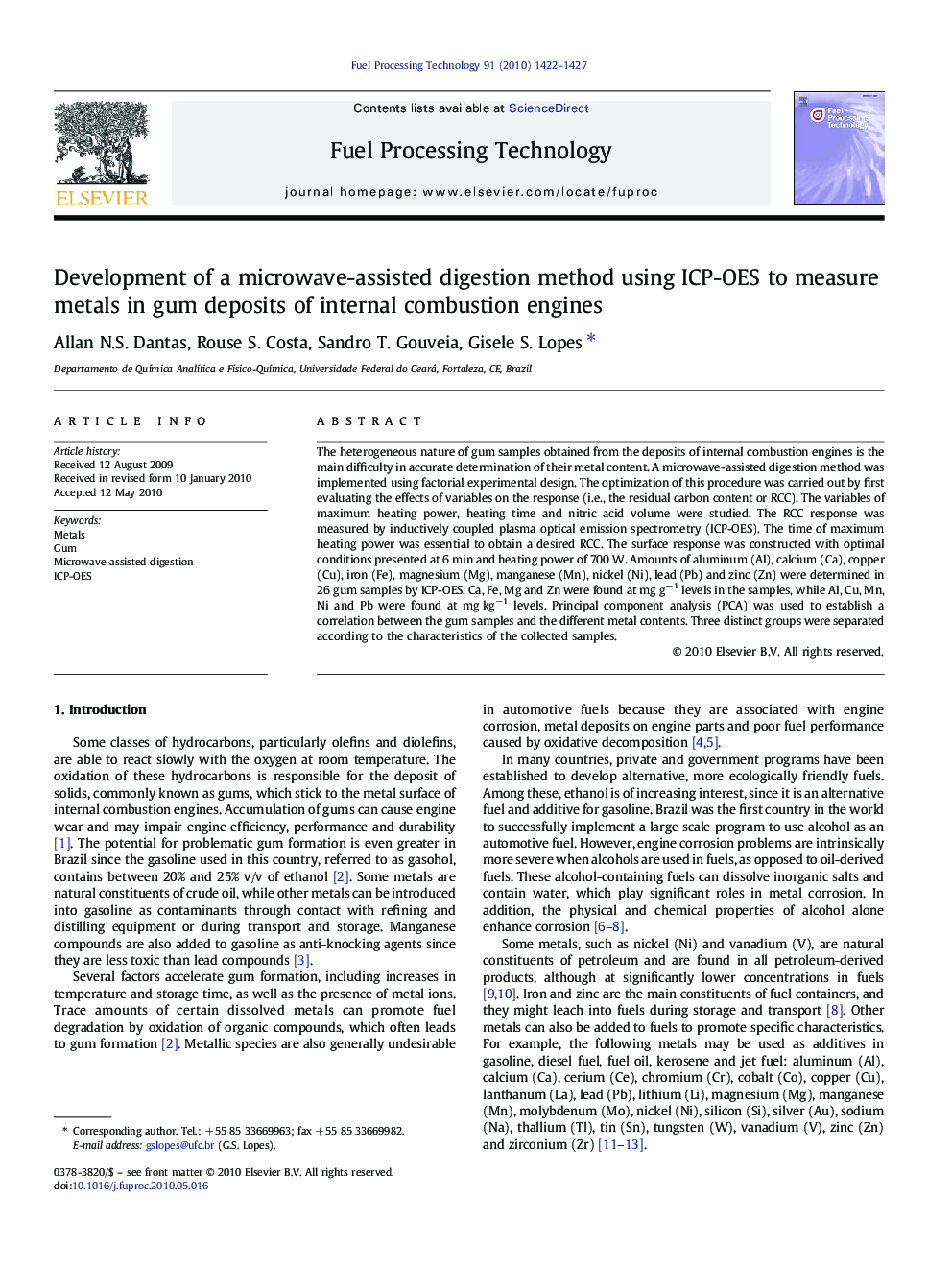| Article ID | Journal | Published Year | Pages | File Type |
|---|---|---|---|---|
| 210625 | Fuel Processing Technology | 2010 | 6 Pages |
The heterogeneous nature of gum samples obtained from the deposits of internal combustion engines is the main difficulty in accurate determination of their metal content. A microwave-assisted digestion method was implemented using factorial experimental design. The optimization of this procedure was carried out by first evaluating the effects of variables on the response (i.e., the residual carbon content or RCC). The variables of maximum heating power, heating time and nitric acid volume were studied. The RCC response was measured by inductively coupled plasma optical emission spectrometry (ICP-OES). The time of maximum heating power was essential to obtain a desired RCC. The surface response was constructed with optimal conditions presented at 6 min and heating power of 700 W. Amounts of aluminum (Al), calcium (Ca), copper (Cu), iron (Fe), magnesium (Mg), manganese (Mn), nickel (Ni), lead (Pb) and zinc (Zn) were determined in 26 gum samples by ICP-OES. Ca, Fe, Mg and Zn were found at mg g−1 levels in the samples, while Al, Cu, Mn, Ni and Pb were found at mg kg−1 levels. Principal component analysis (PCA) was used to establish a correlation between the gum samples and the different metal contents. Three distinct groups were separated according to the characteristics of the collected samples.
